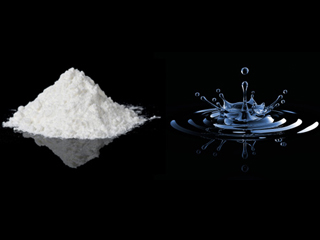Competencies: granular materials, complex fluids and fracture mechanics
Where the dynamics of granular or fluid systems are to be investigated, then SimPARTIX® can provide users with detailed insights that are hardly possible with physical experiments.
Furthermore, a scientifically sound approach through specific simulation studies replaces expensive trial-and-error experimentation.
Owing to its particle-based approach, SimPARTIX® is ideal for applications with granular materials (e.g. powder). In this case every individual particle is simulated directly in the computer. It is also possible to model (complex) fluids and solids simply and efficiently. Even a coupling between solid and liquid phases, as occurs in suspensions, for example, can be handled without problems and is one of the strengths of SimPARTIX®.
 Fraunhofer Institute for Mechanics of Materials IWM
Fraunhofer Institute for Mechanics of Materials IWM